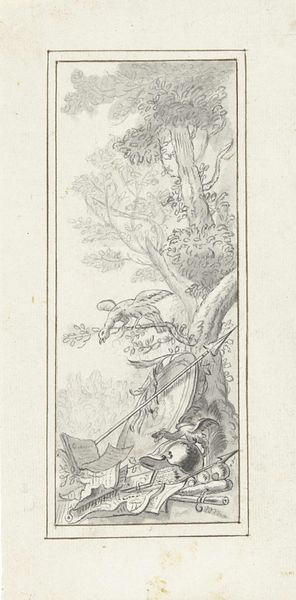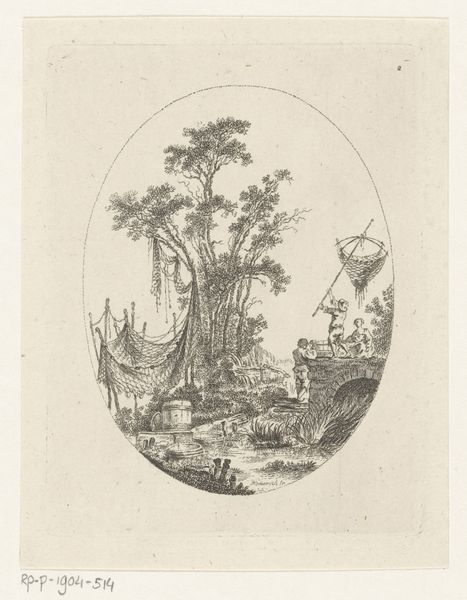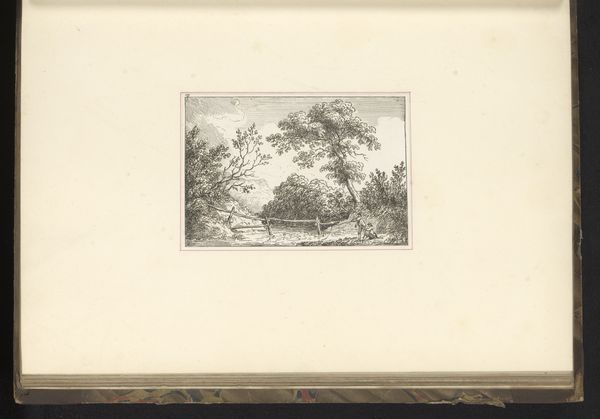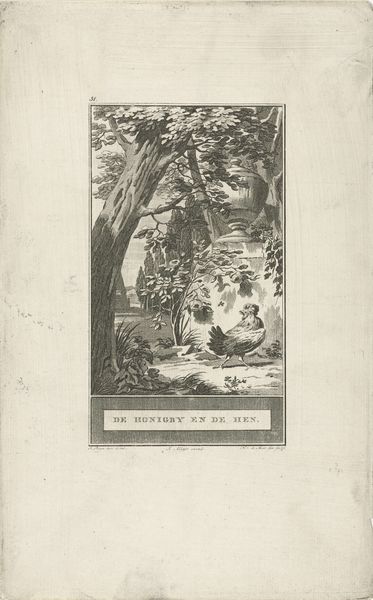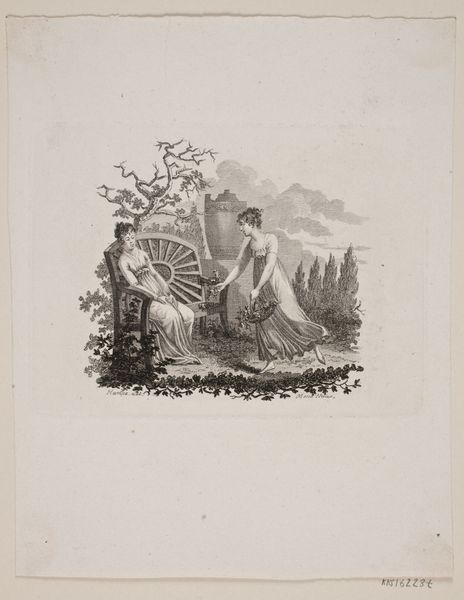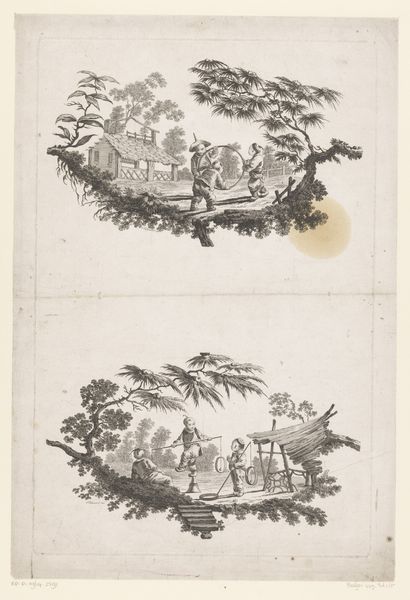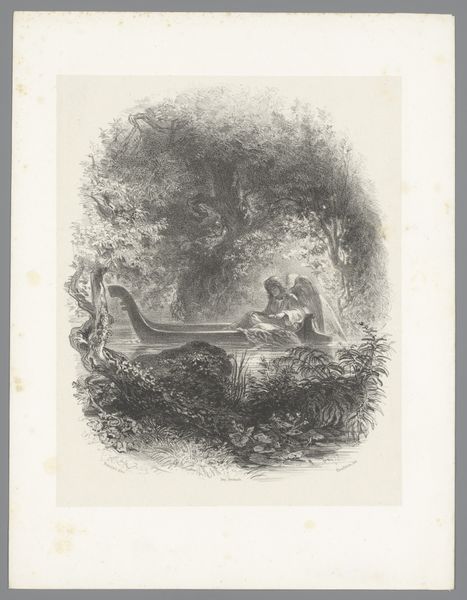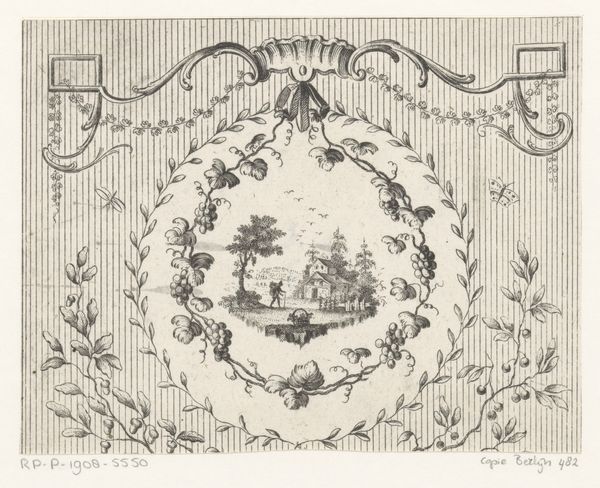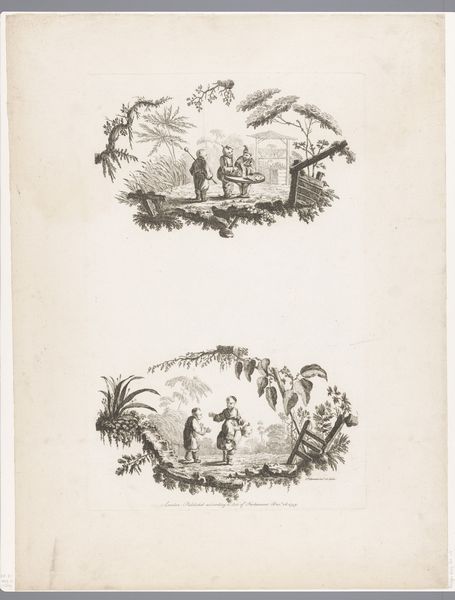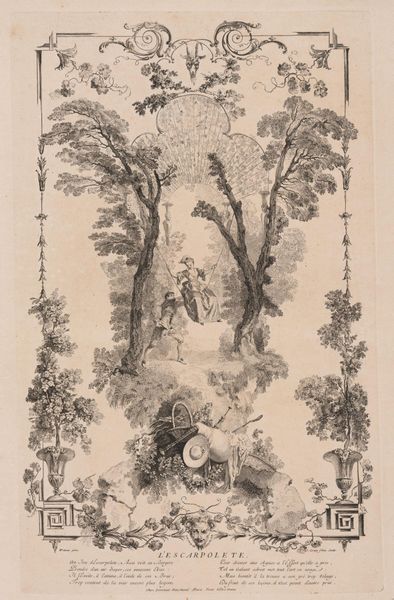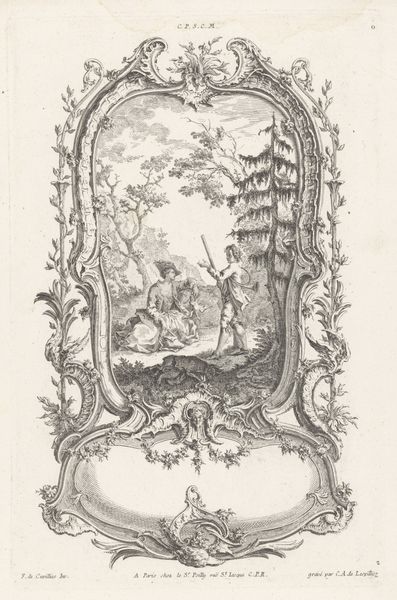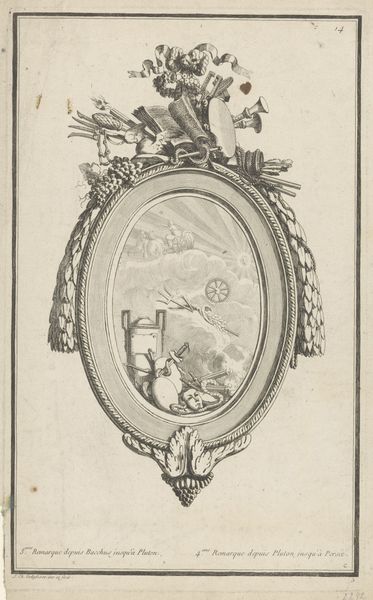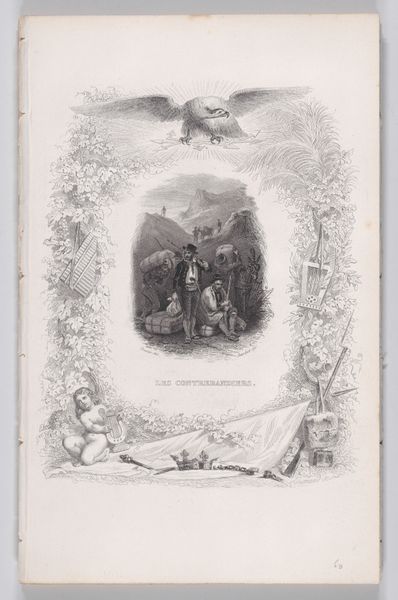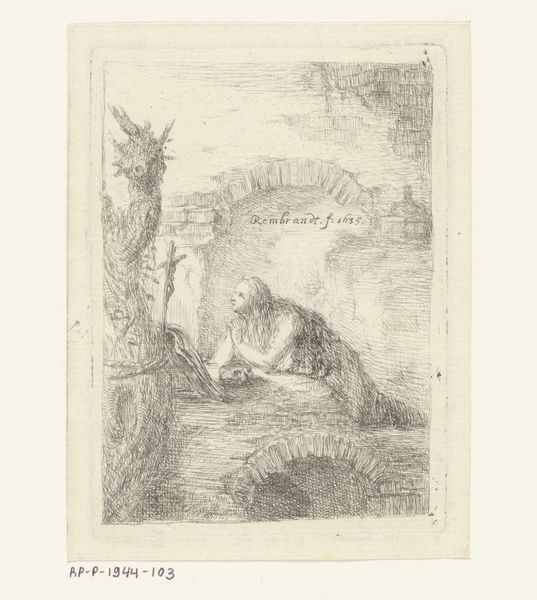
Dimensions: height 155 mm, width 93 mm
Copyright: Rijks Museum: Open Domain
Curator: Willem Steelink created this etching, "Landschap met zonsopkomst," or "Landscape with Sunrise," in 1864. It’s a fascinating example of 19th-century printmaking. Editor: It has an undeniably nostalgic aura. The delicate linework and grayscale palette create a dreamy, almost ethereal effect. The landscape inside the circle and the ornamentation below—it all evokes a sense of reverie. Curator: Absolutely. Steelink situates this landscape firmly within a Romantic tradition. Etchings like these played a crucial role in disseminating landscape imagery to a broader public. Prints often served as both art objects and accessible representations of nature, shaping perceptions of the natural world. The 'Aurora' printed above, suggests perhaps, an idealistic depiction. Editor: Yes, that sense of accessible idealism feels central. I find it interesting that the landscape is framed by both the circular border and then visually "placed" above what looks like a collection of roses and a lute. It makes the scene feel both observed and constructed, like a stage setting. Does this self-conscious framing suggest a commentary on how landscapes were being consumed? Curator: The inclusion of musical instruments and floral arrangements alongside the landscape might reflect the socio-cultural values and artistic tastes of the period. This was an era where class and wealth were communicated via associations with leisure, and indeed a very specific idea of beauty and nature. Consider too, who was able to participate in those leisured pastimes? Who had access to art and artistic training, or who had the capital for instruments and the lifestyle that accommodates this kind of bucolic scene? Editor: It certainly brings a fresh lens to consider the historical context shaping the artwork and its role in conveying socio-political power relations. It pushes me to want to delve into the identity of Steelink and Kruseman in greater detail and their place in these conversations at the time. Curator: Indeed, these types of etchings allowed people to carry nature and artistic expressions within their homes, even if access to real landscapes or original artworks was limited. The choice to emphasize "Aurora" could certainly denote the concept of a dawning cultural era. Editor: Examining Steelink's work through a socio-historical framework allows us to see it as more than just a pretty landscape. It becomes a document of its time, revealing much about the cultural values and power structures of 19th-century society.
Comments
No comments
Be the first to comment and join the conversation on the ultimate creative platform.
